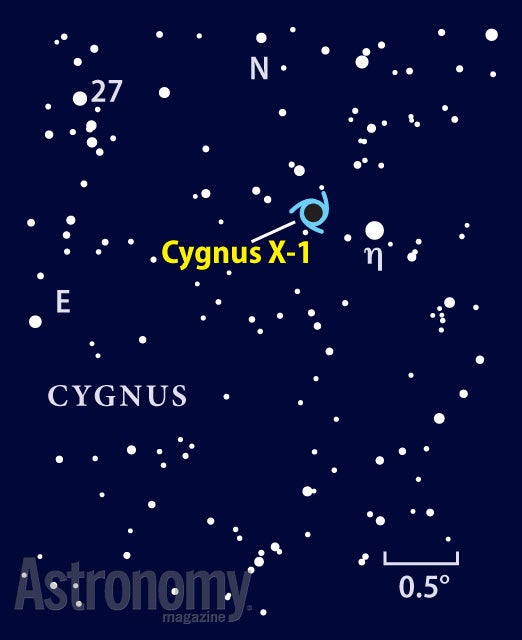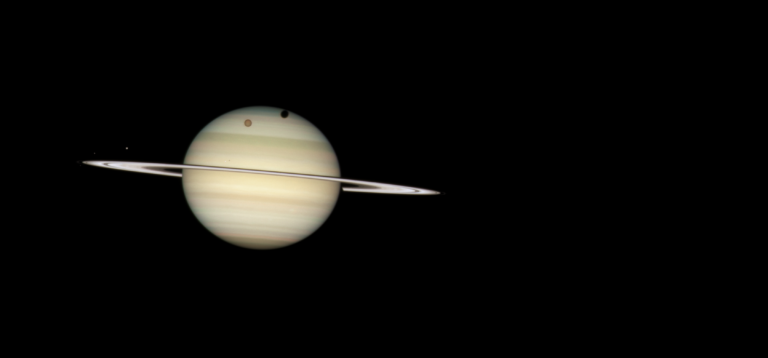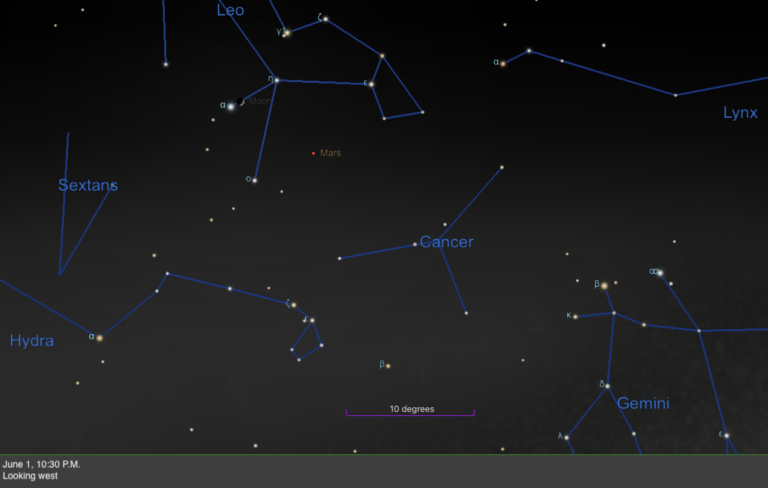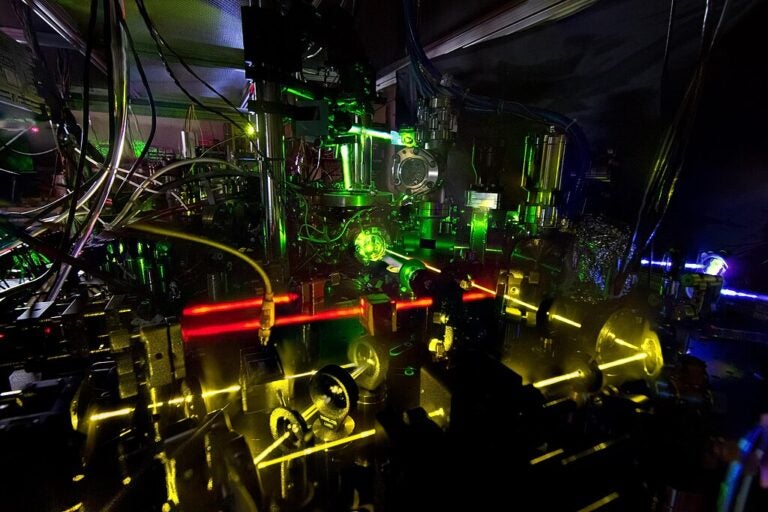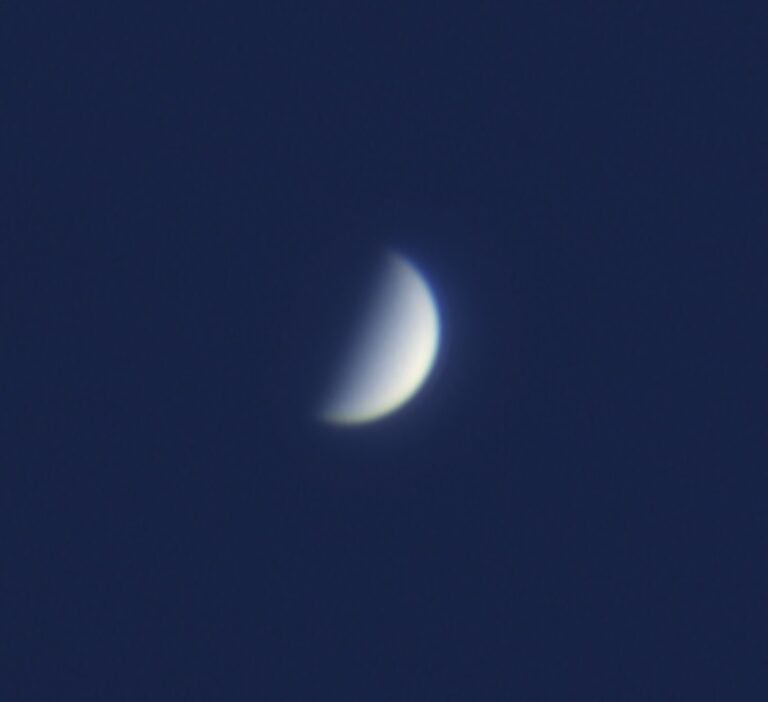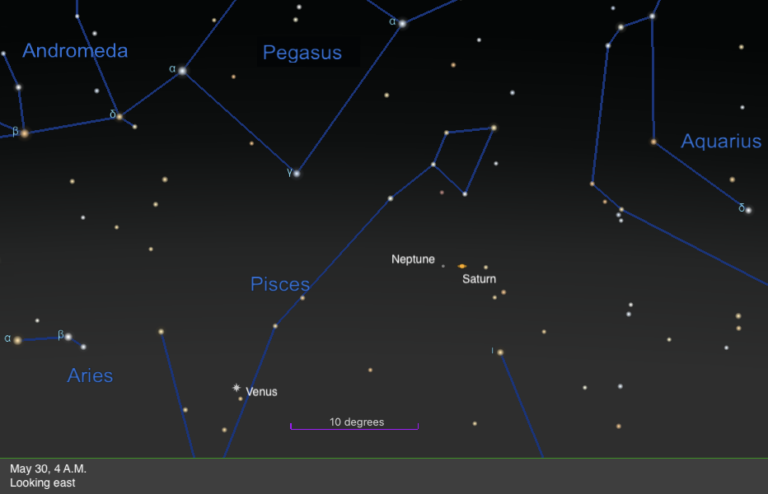To be wowed at the sight of a mere stellar speck or fuzzy patch, we need to understand its true nature. The awareness that the hazy oval blob in Andromeda is the combined light from hundreds of billions of unresolved stars in an enormous galaxy 15 million trillion miles away (a much more jaw-dropping figure than the standard 2.5 million light-years) evokes an intellectual “wow!”
This month, we’ll take a telescopic voyage to HDE 226868. The name is impressive, but does it pack a visual or an intellectual “wow!”? To find out, go outside and train your telescope on the 4th-magnitude star Eta (η) Cygni. The StarDome map at the center of the magazine shows its location about midway between Beta (β) and Gamma (γ) Cygni. Scanning the area around Eta with a low-power eyepiece, you’ll notice a pair of faint stars less than 0.5° to its east-northeast.
If you’re unsure where east is in the eyepiece field, just center Eta in the field, turn off the drive if the scope has one, and wait. The stars will follow Eta across the field. The brighter member of the pair is HDE 226868 (entry 226868 in the Henry Draper Extended star catalog produced by Harvard College in the late 1920s and early 1930s). A 9th-magnitude star, it’s definitely not a visual “wow.” But HDE 226868 has an invisible companion, and that’s where the “wow” comes in.
In 1971, observations showed that HDE 226868 has a close companion with a mass about 15 times that of the Sun. The source had been found! What could be incredibly massive, incredibly small, and give off a boatload of X-rays? A black hole!
HDE 226868 and its invisible companion are what astronomers call an X-ray binary. The system’s official designation is Cygnus X-1 (the brightest source of X-rays found in Cygnus). While the traditional stellar-mass black hole is the product of a supernova explosion/implosion, the Cygnus X-1 black hole seems to have formed when the progenitor star suddenly collapsed during its early stages of formation. Some 5 million years later, material from the supergiant continues to be gravitationally drawn to the black hole. These gases spiral inward, forming a whirlpool called an accretion disk. The closer the gases get to the black hole, the more rapidly they spin. Near the event horizon (the outer edge of the black hole), they whirl around at 60 percent the speed of light! Temperatures here reach many millions of degrees, and massive quantities of X-ray radiation are released.
Now that you know that HDE 226868/Cygnus X-1 is far more than an insignificant dot, take another look — this time with your mind. Picture a gigantic blue-white star locked in the gravitational embrace of a black hole, material from its surface being stripped away and dragged into a swirling maelstrom and ultimate oblivion. Cygnus X-1 is a cerebral “wow” if there ever was one!
The next time you look into the eyepiece and see a stellar speck in the middle of the field, pause to imagine what you’re looking at. It might be an X-ray binary like Cygnus X-1 or a distant supergiant star in its death throes, soon to explode as a nova or supernova. Then again, it could be a star similar to the Sun — a mere dot until you realize that it may harbor a system of planets, one of which may be teeming with life. In the night sky, everything is a “wow” object.
Questions, comments, or suggestions? Email me at gchaple@hotmail.com. Next month: When is bright not so bright? Clear skies!


